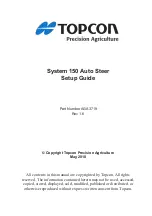
3
tains. It's important to
us
(and our power users), but, if
you
don't care
how many watts of power the unit has, or how many waypoints the your
unit can store, skip ahead to important information on how the sonar
works, on page 5. (Background on GPS begins on page 6.)
Capabilities and Specifications: LMS-
334c iGPS
and LMS-
339c
DF iGPS
General
Display:
............................ 5.0" (12.7 cm) diagonal; 256-color Solar-
MAX™ TFT display; programmable to
viewing preference.
Resolution:
...................... 480 pixel x 480 pixel resolution; 230,400 total
pixels.
Backlighting:
.................. Backlit fluorescent/ cold cathode screen and
keypad with multiple lighting levels for night
use.
Input power:
................... 10 to 15 volts DC.
Current drain:
............... Sonar only: 500 ma lights off; 600 ma lights
on. With GPS and lights on: 700 ma.
Case size:
......................... 5.4" H x 6.9" W x 3.4" D (13.8 x 17.6 x 8.6
cm); sealed and waterproof; suitable for
saltwater use.
MMC slots:
...................... One with waterproof door (SD card compati-
ble).
Recording:
........................ GPS uses MMC & SD cards for recording trip
details and displaying charts or custom maps.
Sonar uses them to record and save sonar
chart logs.
Back-up memory:
.......... Built-in memory stores sonar records and
GPS data for decades. User settings are
stored when unit is turned off.
Languages:
...................... 10; menu languages selectable by user.
Sonar
Frequency:
......................
LMS-339cDF:
50/200 kHz.
LMS-334c:
200 kHz.
Transducers:
.................... A dual-frequency Skimmer
transducer with
built-in temperature sensor is packed with the
Summary of Contents for LMS-334c iGPS
Page 62: ...54 Notes ...
Page 98: ...90 Notes ...
Page 102: ...94 Notes ...
Page 134: ...126 Notes ...
Page 148: ...140 Notes ...
Page 182: ...174 Notes ...
Page 197: ...189 Notes ...












































